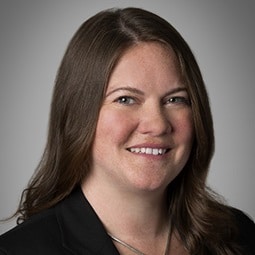Contributed by Nelly Almeida.
“Mr. Burgundy, I am a professional and I would like to be able to do my job.”
Veronica Corningstone to Ron Burgundy in “Anchorman: The Legend of Ron Burgundy” (2004)
In counseling debtor clients, it is not always easy to draw the line on what constitutes a “professional” that must be retained in accordance with section 327(a) of the Bankruptcy Code. Although section 327(a) provides some examples of what a bankruptcy professional is—attorneys, accountants, appraisers, and auctioneers—it also references “other professionals.” Whether a service provider that otherwise would be considered a professional in its own world also would be considered a professional in the bankruptcy world can have significant consequences. Not only must a bankruptcy professional be subject to stringent disclosure requirements, a formal retention application, and compliance with the Bankruptcy Code, local rules, and court orders to get paid (often months after it has performed its services), but a bankruptcy “professional” also must be “disinterested” under section 101(14) of the Bankruptcy Code. Because a professional retained under section 327(a) cannot be disinterested if it is a creditor of the debtor, a potential debtor planning to retain a 327(a) professional either must make sure the fees of the professional are kept current prepetition or face the awkward possibility that, once the debtor files, it will not be able to retain the professional unless the professional waives its claim for unpaid fees. Unfortunately, the Bankruptcy Code provides no bright line test for determining what an “other professional” is. As a recent decision of the United States Bankruptcy Court for the Eastern District of Louisiana demonstrates, courts in some jurisdictions provide little guidance and mostly address the issue on a case by case basis.
After its chapter 11 filing, the debtor, New Orleans Auction Galleries, Inc., entered into a “Professional Services Contract” with Gambel Communications, L.L.C., for public relations services pertaining to any initiatives, activities, opportunities, and communication strategies taken by the debtor. Under the contract, the debtor agreed to reimburse the PR firm for certain “incidental costs” and pay a flat fee of $7,500.00 for the first month and, thereafter, a monthly fee of $4,500.00 (based on an estimated 30 hours of work each month at $150.00 per hour). Over the course of about four months, the debtor paid the PR firm a little over $26,000. The debtor did not apply to the bankruptcy court to retain the PR firm as a 327(a) professional or otherwise seek authority under section 363(b) of the Bankruptcy Code to enter into the PR consulting agreement as a transaction outside the ordinary course of business.
The confirmation order for the debtor’s plan set an administrative expense bar date for all administrative expenses other than those incurred by the debtor in the “ordinary course of business.” After the PR firm filed a request for payment of unpaid fees and expenses after the administrative expense bar date, the debtor objected.
In considering the PR firm’s application, the Bankruptcy Court had to consider two issues. First, was the PR firm a “professional” whose formal retention was required under section 327(a) of the Bankruptcy Code? Second, even if the debtor was not required to retain the PR firm, were the fees and expenses incurred by the debtor in possession in the ordinary course of its business? In examining these issues—and denying the PR firm’s request for payment—the Bankruptcy Court adopted a broad view of “professional” and a narrow view of “ordinary course of business.”
The Bankruptcy Court cited to a 1990 bankruptcy court decision in adopting a definition of a professional as “someone with special knowledge and skill usually achieved through study and educational attainments whether licensed or not.” Under this definition, the PR firm qualified as a professional because (i) the PR firm’s owner had been in the public relations business for 30 years, and (ii) the PR firm employee performing work for the debtor had a master’s degree in communication. The Bankruptcy Court did not address the more recent line of cases, including in Delaware, under which courts have examined the notion of what constitutes a “professional” by looking at whether an entity (i) plays a central role in the administration of a debtor’s estate or (ii) is given discretion or autonomy to exercise his or her own professional judgment in some part of the administration of the debtor’s estate. Indeed, although no factor is deemed dispositive, other bankruptcy courts have thoroughly examined the nature of the services an entity will perform before deciding whether such entity is a “professional” under the Bankruptcy Code. Presumably, under the definition adopted by the Auction Galleries court, all PR firms would qualify for 327(a) professional status, regardless of whether the services performed relate to the administration of the debtor’s estate. One even wonders how an electrician would fare under the broad definition adopted in Auction Galleries.
The Auction Galleries court further explained that, had the debtor sought to retain the PR firm as a professional, the court would have seriously scrutinized the magnitude of the retainer, and the PR firm would have “[borne] the burden of proving the reasonableness of its fees.” Indeed, the court noted that the PR firm only spent a total of 118.15 hours working for the debtor, and, applying the hourly rate of $150.00 per hour used to calculate the retainer, instead of the flat monthly retainer, the PR firm earned only $17,722.50 in the aggregate—less than half of the total amount it invoiced the debtor for its services.
The court also considered whether the PR firm’s claim—even if it were not considered a professional—would be barred as a result of its failure to file an administrative expense prior to the administrative expense bar date. In this analysis, the court adopted a narrow view of “ordinary course of business” and found that the PR firm’s claim for compensation was outside of the ordinary course of business because, among other things, (i) the debtor had not employed a public relations firm in the fifteen years prior to bankruptcy, and (ii) the PR firm had made no showing that retention of a PR firm was an ordinary course expense in the debtor’s industry. Although other courts have examined “ordinary course of business” from the perspective of whether the transaction arose from the debtor in possession’s regular business activities, the Auction Galleries court seemed to apply an analysis more closely resembling the “ordinary course of business” defense to a preference under section 547(c)(2) of the Bankruptcy Code, which requires (among other things) that the transfer was made in the “ordinary course of business or financial affairs of the debtor and the transferee.” The case also suggests an analysis similar to that used under section 363(c) of the Bankruptcy Code, which focuses on the debtor’s historical practices in determining what constitutes the ordinary course of the debtor’s business. In the context of an administrative expense bar date, such an analysis puts pressure on a creditor whose relationship first arises with the debtor in possession to make determinations about the nature of the debtor’s business based upon facts that may not be known to such creditor, such as what the debtor’s historical practices have been. Creditors faced with having to decide whether their transaction arises in the “ordinary course of business” of the debtor in possession may very well decide to err on the side of caution and take steps to protect themselves from an ex post facto determination that the transaction was outside the ordinary course of business.
Notwithstanding the conclusion of the Auction Galleries court that the PR firm should have been formally retained, the Bankruptcy Court did not order the PR firm to disgorge the fees it already had received. In lieu of disgorgement, the court simply denied the PR firm’s request for payment of its unpaid fees and expenses. Although Auction Galleries appears to take a different approach to the concept of what constitutes a “professional” than the majority view, it certainly highlights the potential repercussions that such a broad interpretation can have on all sorts of “professionals” working for a debtor in possession in a chapter 11 case.




















